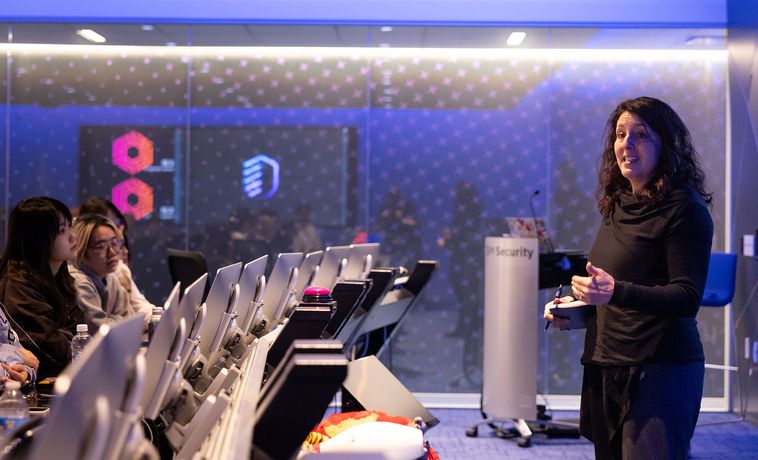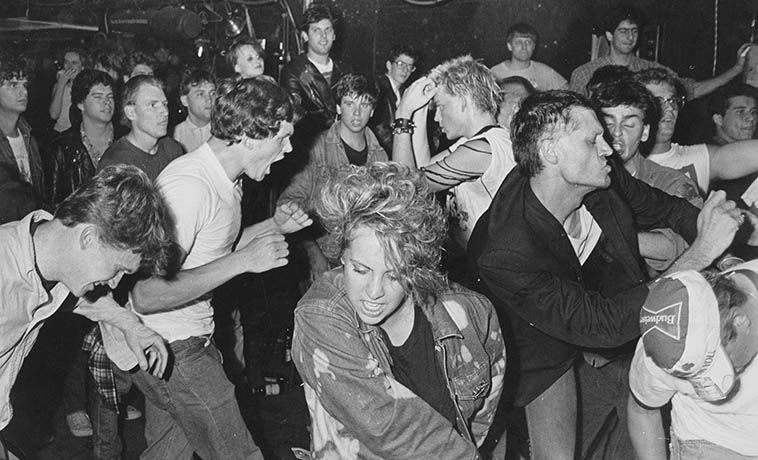A PR Life
Lee Cherenson, who graduated from COM when Truman was president, reflects on 60 years of public relations

Lee Cherenson (DGE’49, COM’51), one of the earliest graduates of the first PR degree program in the country, has spent six decades in the business. Photo by Ken Cavanagh
As a high school student in the ’40s, Lee Cherenson sold newspapers and magazines in the newsstand of the Lowell, Mass., train station. “The printed word surrounded me,” he says, and his passion for words led him to COM, where he discovered public relations and enrolled in the nation’s first PR degree program.
In 1958, Cherenson (DGE’49, COM’51) founded advertising and public relations agency Success Communications Group (formerly The Cherenson Group), headquartered in Parsippany, N.J., which is still operating today. Throughout the last six decades, Cherenson says, the agency has worked with some of the biggest companies in the United States, including Walmart and Prudential Financial. Cherenson spoke with COMtalk about teaching communication skills to soldiers, developing ideas from napkin sketches and starting a firm in his garage.
Q&A
With Lee Cherenson
COMtalk: What led you to public relations?
Cherenson: Despite my parents’ limited formal education, they truly valued schooling, and they had me take an aptitude test in high school, which indicated my aptitude for creative endeavors. I had a large and extended family in the Boston area; several aunts, uncles and cousins attended BU. They suggested to my parents that the University might be a good fit for me. During my first two years at BU, I learned about the new PR program, which sounded exciting and innovative. Together with a few other students, I took the leap.
What was COM like when you were there?
As you can imagine, we had very few books or educators back then, and no standardized curriculum—but what we lacked in formal process and programming, we made up for with trailblazing energy and excitement, a drive to innovate and a collegial spirit.
You’re also a veteran, and used your PR skills in the Army. What kind of communication work did you do?
While at BU, I was in the Army reserves and was activated after graduation. I was deployed to Korea in 1952; while aboard the troop transport ship, I was reassigned to the Eighth Army and quartered with an ammunition unit. I was part of a communication team that taught noncommissioned officers basic communication skills like public speaking and writing. We also wrote news releases about individuals in our unit and distributed them to local newspapers back in the US. We had a two-pronged goal: prepare our fellow soldiers for life after the military and help shine a light on their service to country.
Why did you decide to start your own agency?
After graduation and the war, I worked at several newspapers and ended up at the Star-Ledger in Newark, N.J., where I oversaw the real estate section. I was eager to get into public relations, so I did some freelance PR work on the side until I had enough freelance business to leave the newspaper.
In 1958, I started a firm with the help of my wife, Connie. It was originally based in our garage, and our son’s babysitter was our first employee; she helped make copies. Most of our original clients were in the real estate business, and we also did work for the New Jersey Dental Society.
I took on partners as the agency continued to progress and evolve with our family. Over the years, all four of our children spent time working at the firm, and our son Michael joined full time in 1990 after graduating college. He’s now executive vice president of SCG Advertising + Public Relations, which was born from that original agency, and served as the national chair and CEO of the Public Relations Society of America in 2009.
The industry must really have evolved throughout your career. What were some of the biggest changes?
While the pace and speed of communication is beyond what I could have imagined in the early ’50s, technology has always impacted the evolution of the business. From electric typewriters and fax machines to computers and the internet, the drumbeat of change has been ongoing. The perception and professionalism of PR has also changed dramatically, thanks in part to programs like BU’s, groups like the Public Relations Society of America, and a long list of thought leaders who have helped advance the profession far beyond the simple writing of press releases.
What hasn’t changed?
In the end, public relations is still about connecting people and ideas. The profession requires an analytical mind, compassion, empathy and ethics, strong work ethic, grit and determination. PR pros still need to communicate clearly, simplify complex issues and remind businesses and other organizations of their obligation to those they serve. What separates public relations from other communication disciplines—even more so today—is our role as the conscience of an organization.
What did earlier generations of PR professionals excel at, compared to the current generation—and vice versa?
When compared to today’s public relations toolbox, our tactics were primitive. Most people in the business world had an extremely limited understanding of public relations. Still, our ranks included some brilliant strategists and communicators, smart people who understood the world, and how to communicate and build consensus and support.
Earlier generations couldn’t hide behind a screen; engagement was about face-to-face communication. Today’s generation has lost a bit of interpersonal muscle. I also think earlier generations, because of the trailblazing element of a new profession, had a special grit. That said, those of my generation could have learned a lot from how today’s practitioners are so accepting of individuals’ differences.
To what do you attribute the longevity of your agency?
First, a great team. I was never afraid to hire people more intelligent than myself. I’ve always been energized by having smart people around me. Certainly, we always wanted to make money, but our primary goal was doing good work and serving clients. We truly believed that our success was dependent upon that of our clients. We were always nimble, entrepreneurial and open to evolution. And while we were financially conservative, we weren’t afraid of taking calculated risks. Finally, we were lucky.
What projects or campaigns are you most proud of having worked on, and why?
A firm can only be as good as its clients allow it to be, and we had many that allowed us to do great work. I think fondly about working with some of New Jersey’s early corporate leaders, including Prudential Financial and the construction company Hovnanian Enterprises, along with a long list of banks and financial institutions. Helping US Home Corporation, which today is Lennar Corporation, grow from an idea presented on a napkin at Seymour’s Luncheonette in Livingston, N.J., to one of the biggest builders in the world is certainly a highlight as well. In the end, it’s not the media clips I remember, it’s the people.
This interview has been edited and condensed for clarity.



